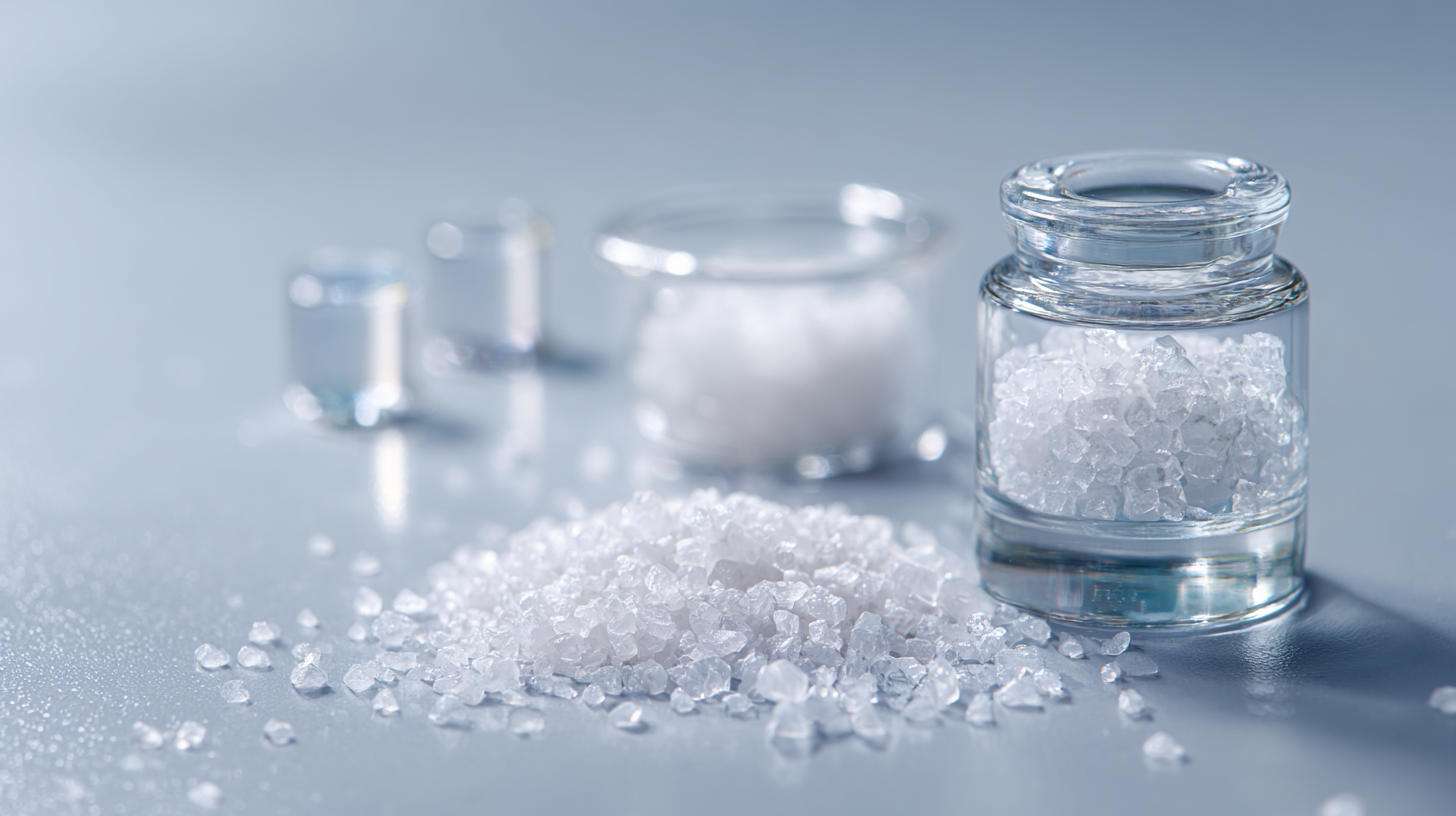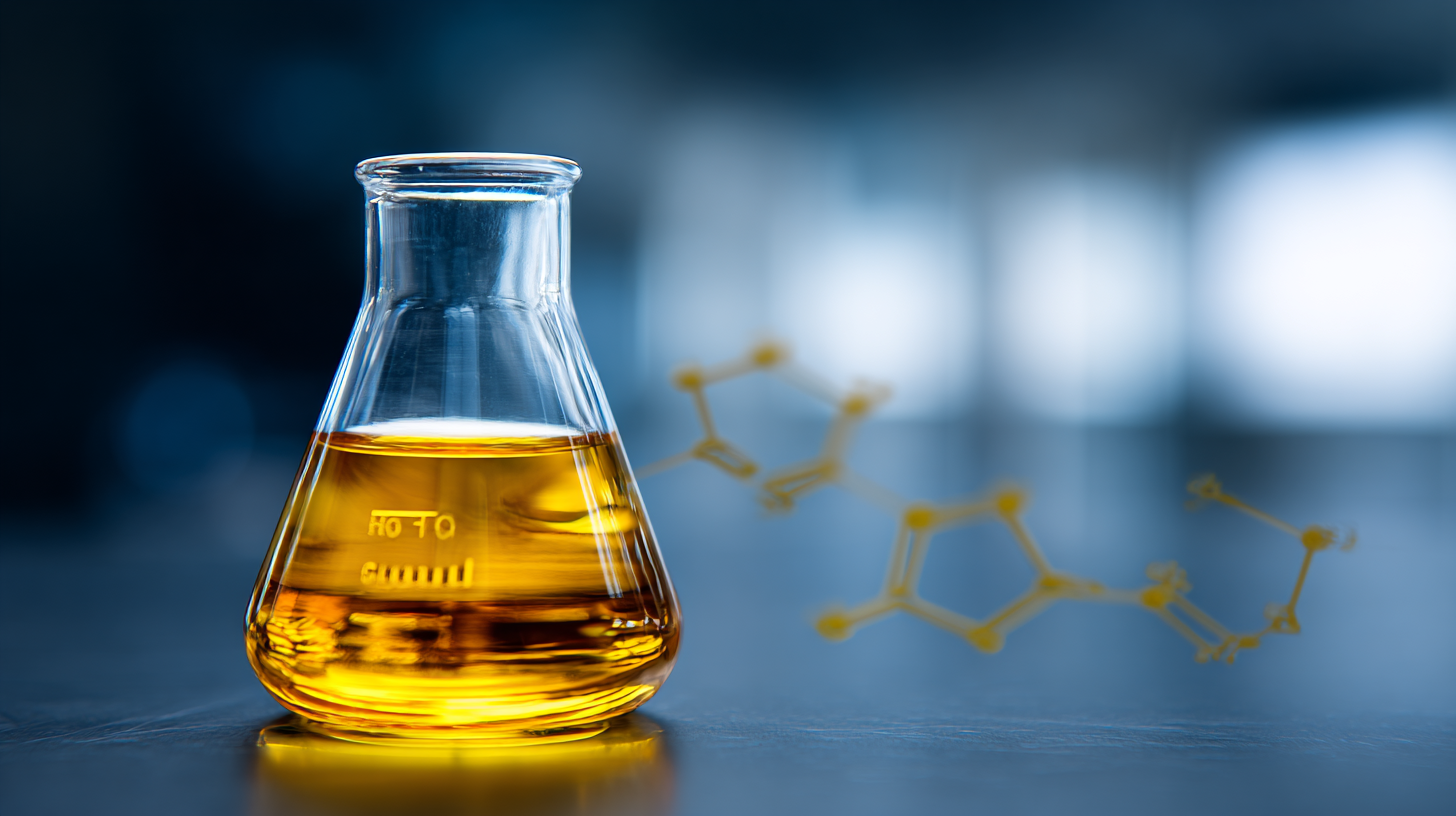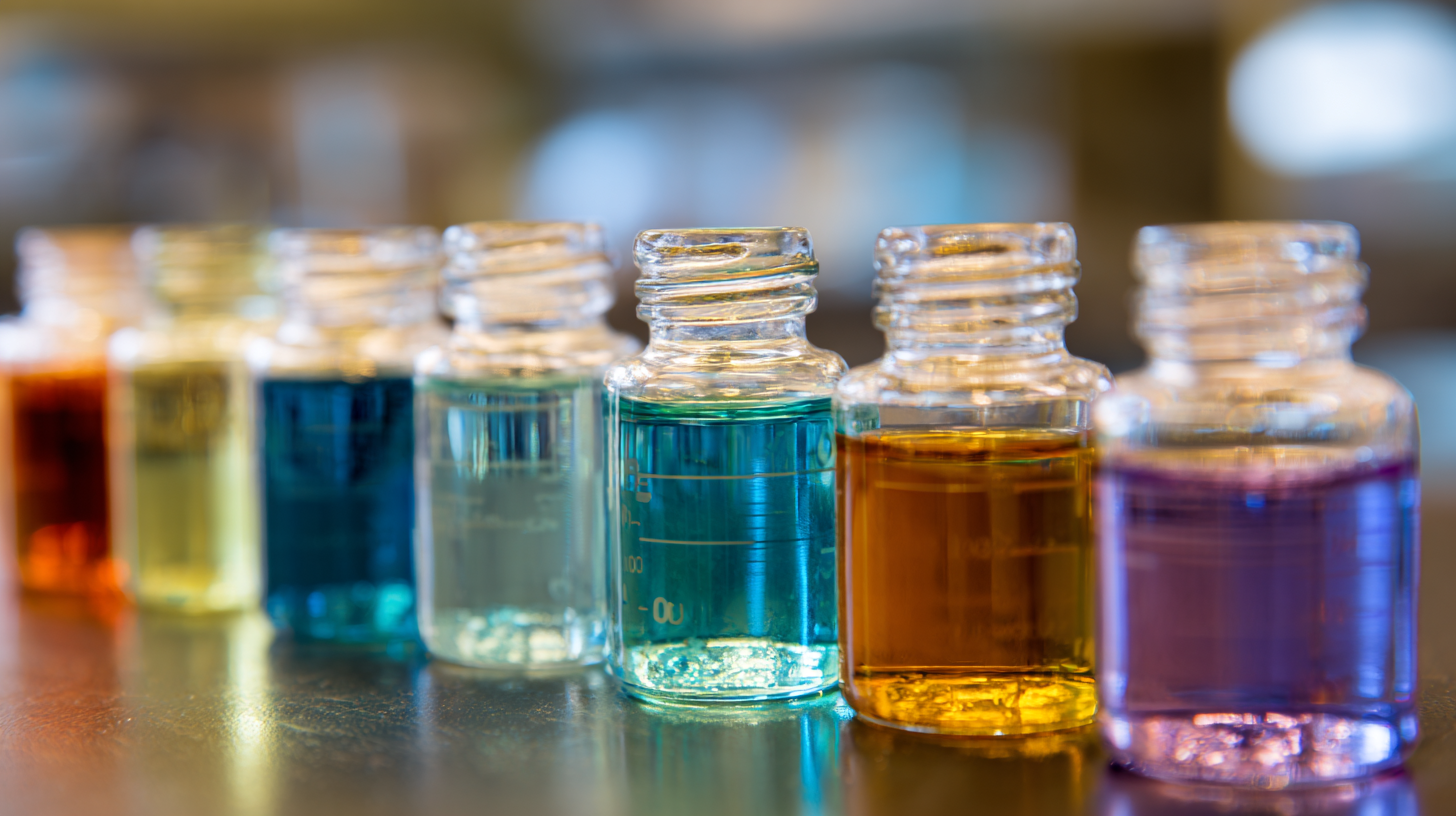Leave Your Message
 Diheptyl Phthalate (DHP) is gaining recognition in the chemical formulation industry for its potential as a safe alternative to traditional phthalates, particularly in applications requiring flexible plastics and coatings. According to a recent market analysis by Grand View Research, the demand for phthalates in various consumer products is projected to reach USD 19.9 billion by 2025, highlighting the significance of safer substitutes like DHP. This compound not only demonstrates lower toxicity profiles but also maintains desirable performance characteristics in formulations.
Diheptyl Phthalate (DHP) is gaining recognition in the chemical formulation industry for its potential as a safe alternative to traditional phthalates, particularly in applications requiring flexible plastics and coatings. According to a recent market analysis by Grand View Research, the demand for phthalates in various consumer products is projected to reach USD 19.9 billion by 2025, highlighting the significance of safer substitutes like DHP. This compound not only demonstrates lower toxicity profiles but also maintains desirable performance characteristics in formulations.
However, the incorporation of Diheptyl Phthalate must be approached with caution, ensuring compliance with regulatory standards and understanding its interactions with other ingredients. By focusing on best practices and industry guidelines, formulators can effectively utilize DHP, ultimately contributing to safer industrial and consumer applications while meeting the growing market demand for high-quality, sustainable materials.
Diheptyl phthalate (DHP) is an ester that exhibits unique chemical properties, making it a valuable additive in various formulations. Characterized by its high chemical stability and low volatility, DHP serves as a plasticizer, enhancing the flexibility and durability of polymers. Its ability to withstand extreme temperatures while maintaining performance makes it particularly suitable for applications in plastics and adhesives. Understanding these properties is crucial for formulators aiming to create effective and long-lasting products.
Incorporating DHP into formulations requires careful consideration of its environmental implications. As highlighted in recent discussions about chemical additives in plastics, the migration and release of substances like DHP can pose challenges during the lifecycle of the product. Consequently, formulators must prioritize strategies that minimize environmental impact, including optimized usage rates and robust formulations that prevent leaching. By balancing functionality with environmental responsibility, formulators can effectively utilize diheptyl phthalate while addressing the concerns associated with chemical additives in consumer products.
| Property | Value |
|---|---|
| Chemical Formula | C18H30O4 |
| Molecular Weight | 306.43 g/mol |
| Appearance | Colorless to pale yellow liquid |
| Boiling Point | > 300 °C |
| Solubility in Water | Negligible |
| Flash Point | > 150 °C |
| Common Applications | Plasticizers, adhesives, coatings |
| Safety Precautions | Use in well-ventilated area; avoid skin contact |
The regulatory standards for the safe use of diheptyl phthalate (DHP) in industrial applications are critical for ensuring both human health and environmental protection. As a commonly used plasticizer, DHP must comply with stringent guidelines set forth by organizations such as the Environmental Protection Agency (EPA) and the European Chemicals Agency (ECHA). These regulations often include limits on the allowable concentration of DHP in various products, along with specific labeling requirements to inform users of potential hazards associated with its use.

Moreover, companies utilizing DHP in their formulations must conduct comprehensive risk assessments to evaluate potential exposure scenarios. This includes understanding how DHP can leach into the environment, as well as implementing appropriate safety measures during production and handling. Regulatory agencies may also mandate periodic reporting and monitoring of DHP usage, ensuring that companies are held accountable for their compliance with safety standards and actively contributing to the reduction of chemical exposure risks.
Adhering to these regulations not only safeguards public health but also enhances the sustainability of industrial practices involving diheptyl phthalate.
When working with diheptyl phthalate in laboratory settings, safety should be the utmost priority. First and foremost, it’s important to don appropriate personal protective equipment (PPE) such as gloves, goggles, and lab coats to minimize exposure. Laboratories should ensure proper ventilation, ideally using fume hoods, to prevent the accumulation of vapors. It's also advisable to familiarize oneself with the material safety data sheet (MSDS) for diheptyl phthalate to understand its hazards and emergency procedures.
Handling diheptyl phthalate requires meticulous attention to cleanliness and containment. Designate specific areas for its use and keep it away from incompatible substances. Utilization of spill trays can help contain any accidental releases, while waste should be disposed of according to local regulations. Scheduling periodic training sessions on the handling and emergency response measures for diheptyl phthalate will equip laboratory personnel with the necessary knowledge to manage this chemical safely, fostering a culture of safety and preparedness within the lab environment.
When incorporating diheptyl phthalate (DHP) into chemical formulations, it is crucial to assess its environmental impact. Studies show that DHP, like other phthalates, can disrupt endocrine functions and accumulate in aquatic organisms. According to the European Chemicals Agency (ECHA), phthalates have been identified as substances of very high concern due to their potential long-term effects on both human health and ecosystems. A report by the World Health Organization (WHO) highlights that the presence of phthalates in the environment can lead to toxic effects on wildlife, necessitating careful risk assessment before use.
**Tip:** Conduct comprehensive environmental risk assessments prior to formulation by utilizing tools such as the REACH regulation guidelines. Additionally, consider substituting DHP with environmentally friendly alternatives that meet the same performance criteria without the associated risks.
Research also indicates that the levels of DHP in soil and water can be influenced by factors such as temperature and microbial activity, leading to varied degradation pathways. The U.S. Environmental Protection Agency (EPA) notes that understanding these dynamics is vital for predicting the long-term fate of DHP in the environment. Implementing best practices in formulation processes and adhering to sustainability criteria can significantly mitigate adverse ecological impacts.
**Tip:** Collaborate with environmental scientists to monitor potential DHP emissions during production and ensure proper waste management protocols are in place to minimize leakage into the ecosystem.
 The incorporation of Diheptyl Phthalate (DHP) in chemical formulations requires a meticulous approach to ensure safety and efficacy, particularly in products intended for sensitive applications. One effective integration technique involves the use of emulsifiers that can enhance the compatibility of DHP with other ingredients while minimizing potential toxicity. By carefully selecting compatible carriers, manufacturers can achieve a homogeneous mixture that preserves the functional properties of the formulation.
The incorporation of Diheptyl Phthalate (DHP) in chemical formulations requires a meticulous approach to ensure safety and efficacy, particularly in products intended for sensitive applications. One effective integration technique involves the use of emulsifiers that can enhance the compatibility of DHP with other ingredients while minimizing potential toxicity. By carefully selecting compatible carriers, manufacturers can achieve a homogeneous mixture that preserves the functional properties of the formulation.
Furthermore, recent studies have highlighted the neuroprotective potential of DHP in the context of neurodegenerative diseases, particularly concerning its effects on amyloid beta protein and acetylcholinesterase activity. Integrating DHP into formulations targeting these pathways could mitigate the harmful impacts of other phthalates like DiNP and environmental toxins such as Benzoapyrene (BaP). By focusing on the biochemical interactions within the nervous system, researchers can develop innovative formulations that not only provide effective results but also prioritize the safety of consumers exposed to neurotoxic substances.
